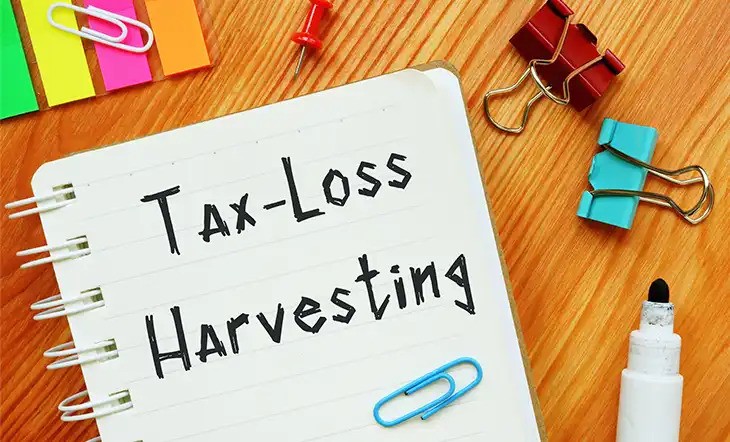How to Rebalance Portfolio Without Selling Investments

Investing your money is more than just putting some cash in an instrument every month. From understanding the tax implications of your investments to aligning them with your financial goals and matching your risk appetite, there is a lot to consider. Even if you get everything right, market fluctuations can leave your portfolio out of sync with your original plan. That is why regular portfolio rebalancing is essential to ensure your investments still align with your needs. But rebalancing does not always mean selling your investments. There are other ways to bring your portfolio back on track.
A financial advisor can teach you the many ways to rebalance your portfolio without selling your investments. This guide will also explore how you can rebalance your investments effectively without selling them.
How do you rebalance investments without selling them and triggering taxes?
On one hand, it is crucial to maintain a portfolio that aligns with your financial goals and risk tolerance. On the other hand, the idea of selling assets to achieve that balance can be troublesome due to the taxes. Every time you sell an investment, any capital gains you make become taxable, even if you are reinvesting the money. This can be a deterrent to rebalancing. Unfortunately, leaving your portfolio out of balance can also lead to problems over time. You may find yourself in a position where your investments are no longer suited to your risk appetite, which can cause unnecessary stress. An unbalanced portfolio may also miss growth opportunities or leave you overexposed to market downturns.
Thankfully, rebalancing does not always have to involve selling your investments. There are several other strategies to bring your portfolio back in line without triggering taxes. Let’s explore how to rebalance your portfolio without paying taxes that often come with selling:
1. Use tax-loss harvesting to offset your investment gains
Investing in the market can sometimes result in losses. While this can be concerning, it is not always such a bad thing. In fact, you can use these losses strategically when it comes to rebalancing your investment portfolio. Tax-loss harvesting is a rebalancing strategy that allows you to sell your underperforming assets to offset gains from other investments. Even though you would be selling your investments, this method can minimize your tax liability while realigning your portfolio with your goals. Here’s how it works:
When you sell investments at a loss, you can use those losses to offset capital gains from other investments that have generated a profit. This can significantly reduce the taxes you owe in a year. If your losses exceed your gains for the year, the Internal Revenue Service (IRS) allows you to deduct up to $3,000 in net losses or $1,500 if you are married and filing separately from your total annual income. However, if your losses for the year are more than the $3,000/$1,500 limit, you can carry forward the excess to future tax years. This way, you can continue using tax loss harvesting to offset gains and rebalance your portfolio in the future. Tax loss harvesting is simple to use. For example, suppose you notice that your portfolio’s stock allocation has increased, and at the same time, one of your stock holdings is currently running at a loss. In this case, you can sell the underperforming stock. Let’s assume that you incur a loss of $2,000. To offset this loss, you sell another stock in your portfolio that has been performing well and generate a profit of $1,000. With tax-loss harvesting, the $2,000 loss from the first sale will offset the $1,000 gain from the second sale. This will leave you with a net capital loss of $1,000 that you can use to reduce your taxable income for the year.
While this strategy is effective, it is important to be mindful of the IRS wash-sale rule. This rule prohibits you from repurchasing the same or substantially identical security within 30 days of selling it at a loss. Violating this rule could disqualify the loss and negate the tax benefits from tax-loss harvesting. If you are unsure how to use tax loss harvesting, consulting a financial advisor can help ensure you make the most of this strategy.
2. Use your dividends for reinvestment
Dividends can be another tool for rebalancing your portfolio without selling your investments. Dividends are a share of a company’s profits distributed to its shareholders. They are often paid out quarterly. There are several ways to use the dividends to your advantage. The first is to use the cash for your expenses. However, this may not serve your long-term financial goals. Instead, reinvesting dividends can create a compounding effect, which helps you maximize your gains over the long term. When you use dividends to buy more shares, those additional shares generate more dividends, which can then be reinvested to buy even more shares.
So, instead of keeping the cash, you can reinvest the dividends back into the same asset by default. This can be helpful if you wish to increase the allocation to the same stock. If this is what you want, you can explore Dividend Reinvestment Plans (DRIPs) offered by many companies. DRIPs automatically reinvest your dividends to purchase additional shares of the same stock. There are usually no commissions or brokerage fees. Some DRIPs even allow you to buy shares at a discounted price. DRIPs reinvest in the same company or fund and can be a convenient way to maximize your returns if you wish to stick to the same stock and see promise in its long-term potential.
However, if you do not want to invest in the same stock, you can take a more strategic approach to portfolio rebalancing. Instead of automatically reinvesting dividends into the same stock or fund, you can consider redirecting them toward underweighted asset classes in your portfolio. For instance, if your portfolio has become overly concentrated in equities, you can allocate your dividends to purchase bonds instead. This can help you bring your portfolio back into alignment with your target asset allocation.
SPONSORED WISERADVISOR
3. Use other cash inflows like bonuses, tax refunds, interests
Dividends are not your only source of income outside your salary or business earnings. Bonuses, tax refunds, and interest from bonds or savings accounts can also be used to rebalance your portfolio. For instance, if you receive a bonus at work, take a moment to assess your portfolio’s current allocation. Are your stocks overrepresented while your bonds are lagging behind? Check if recent market movements have changed the intended risk level of your portfolio. If your portfolio is not aligned with your needs, you can consider using the extra cash to buy more of the underweighted asset class in your investment split. If your stock holdings are underweight, you can invest in stocks. If your bond holdings need a boost, you can channel your bonus there. This approach can ensure that your portfolio remains aligned with your financial goals without requiring you to sell existing investments and potentially incur taxes.
The same principle can be applied to income tax refunds. When you receive a refund after filing your return, consider using it for portfolio rebalancing instead of spending it on non-essentials. Similarly, interest income from bonds or savings accounts can also be reinvested strategically. For example, if you earn interest income from bonds and do not need this income for your essentials, you could use it to buy stocks if they are underweighted or reinvest it in bonds. This method can be useful for people who are not dependent on their interest income. It avoids triggering capital gains taxes and allows you to use new money to correct the imbalances in your portfolio.
4. Rebalance your investments within tax-advantaged accounts like 401(k)s and IRAs
If you use tax-advantaged accounts such as a 401(k) or an Individual Retirement Account (IRA), you can use them to rebalance your portfolio without facing the tax consequences of selling assets. Transactions within these accounts are sheltered from capital gains taxes. So, you can sell assets that are overperforming and purchase underperforming ones to realign your portfolio without triggering any tax. In a 401(k), you can adjust your portfolio by reallocating existing contributions or even by directing new employer-matched contributions. For instance, if your employer matches a portion of your contributions, you may consider directing those matches toward underweighted asset classes. This not only helps in rebalancing but also maximizes the benefit of employer contributions. You can speak to your employer or the retirement plan administrator to explore the available investment options and make adjustments as needed to keep your portfolio aligned with your goals and risk tolerance.
Similarly, with an IRA, both traditional and Roth, you can speak to your plan provider about reallocating investments within the account. For example, if your equity allocation has grown beyond your target, you can sell some of the equity holdings and shift the funds into bonds or other fixed-income instruments without incurring taxes. The key advantage here is that gains and income within these accounts grow tax-deferred in the case of traditional IRAs or tax-free in the case of Roth IRAs. Moreover, any taxes are only incurred when you withdraw funds from a traditional account, and those withdrawals are taxed as ordinary income. Roth IRAs, on the other hand, allow tax-free withdrawals in retirement as long as certain conditions are met.
5. Make new contributions to underweighted assets
Instead of selling existing investments to realign your portfolio, you can allow your current holdings to remain as they are and simply allocate new funds to the areas that need balancing. This simple yet convenient approach can eliminate the need for any new transactions within your existing investments, thus avoiding potential transaction fees or capital gains taxes. For instance, imagine your portfolio is heavily concentrated in large-cap stocks, and you would like to diversify into small-cap stocks. Instead of selling off your large-cap stock holdings, you could direct your new contributions towards small-cap stocks. Over time, as you continue to invest, your portfolio will gradually shift towards the desired balance. Instead of constantly adjusting your portfolio with frequent buys and sells, simply focusing on new contributions keeps your asset allocation in check while helping you stay on track with your goals without the burden of unnecessary costs or tax implications.
This strategy provides a low-cost way to rebalance your portfolio, as you are essentially letting new money work for you in the areas that are underweighted. Because you are not selling any assets, you avoid paying transaction fees, and, importantly, you will not trigger any capital gains taxes. Furthermore, by making new contributions to underweighted assets, you can spread your investments over time and reduce the impact of market volatility. You would be investing regularly anyway, but now, instead of simply adding more funds to your existing mix, you can direct those contributions toward new assets that are underweighted in your portfolio.
To conclude
Portfolio rebalancing is crucial for maintaining a portfolio that aligns with your changing risk appetite and adapts to new market movements. Sticking to the same allocation for years can make your portfolio redundant and misaligned with your current goals and market conditions. That is why periodic rebalancing is necessary to ensure it continues to work for you. However, the best approach for rebalancing depends on your individual financial situation and goals, which is why consulting a financial advisor can be incredibly beneficial. In some cases, selling certain investments may be the only way to rebalance your portfolio. If you face such a situation, consider taking help from a financial advisor who can guide you through the process, minimize tax implications, and maximize the long-term growth of your investment portfolio.
Use the free advisor match tool to get matched with experienced financial advisors who can help you understand tax-efficient strategies for rebalancing your portfolio and ensure that your investments align with your long-term goals. Answer some simple questions about your financial needs and get matched with 2 to 3 advisors who can best fulfill your financial requirements.








.jpg)













.jpg)





.jpg)


.jpg)


.jpg)















.jpg)




.jpg)





.jpg)

.jpg)







.jpg)

.jpg)






.jpg)




.jpg)

.jpg)
.jpg)



.jpg)





.jpg)
.png)
.jpg)



.jpg)

.jpg)




.jpg)


.jpg)

.jpg)

.jpg)
.jpg)
.jpg)

.jpg)
.jpg)



.jpg)




.jpg)
.jpg)


.jpg)
.jpg)
.jpg)
.jpg)
.jpg)

.jpg)



.jpg)
.jpg)


.jpg)
.jpg)
.jpg)
.jpg)

.jpg)

.jpg)













.jpg)

.jpg)



.jpg)




.jpg)











.jpg)



